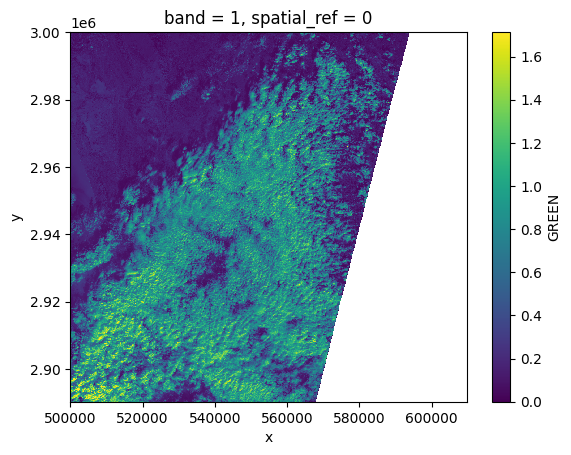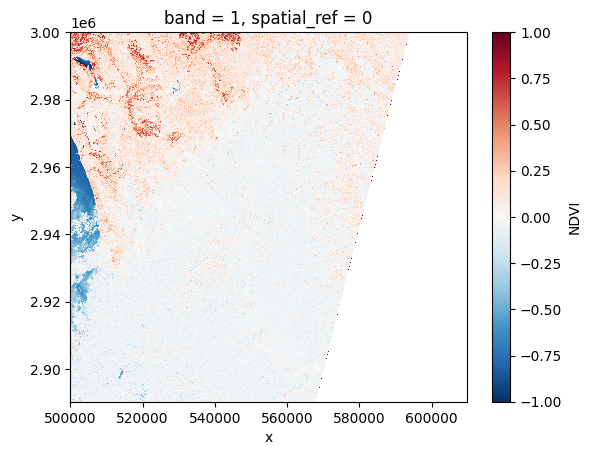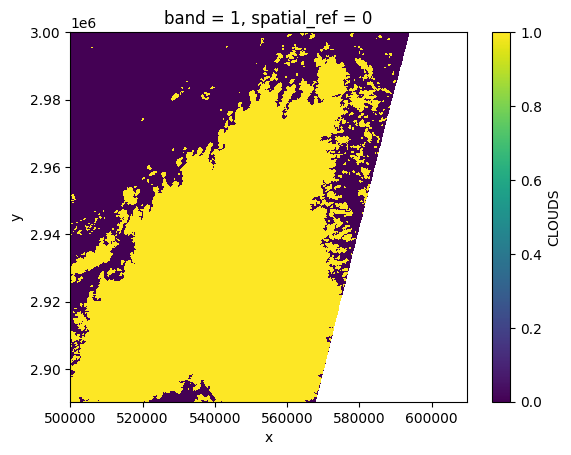Basic example#
Let’s use EOReader for the first time.
Imports#
import os
# EOReader
from eoreader.reader import Reader
from eoreader.bands import GREEN, NDVI, CLOUDS
Data#
First of all, we need some satellite data.
Let’s open a Sentinel-2 product.
path = os.path.join("/home", "data", "DATA", "PRODS", "S2", "PB 02.07+", "S2B_MSIL2A_20200114T065229_N0213_R020_T40REQ_20200114T094749.SAFE")
Create the Reader#
First, create the Reader object.
This object will automatically detect the type of constellation of your product.
It relies on the internal composition of the product (usually the presence of the metadata file), so please do not remove them.
The Reader is a singleton that should be called only once.
It can be used several times to open all your satellite products.
No need to extract the product here: archived Sentinel-2 are handled by EOReader.
reader = Reader()
Open the product#
The reader is used to open your product, just call the open function.
prod = reader.open(path)
prod
eoreader.S2Product 'S2B_MSIL2A_20200114T065229_N0213_R020_T40REQ_20200114T094749'
Attributes:
condensed_name: 20200114T065229_S2_T40REQ_L2A_094749
path: /home/data/DATA/PRODS/S2/PB 02.07+/S2B_MSIL2A_20200114T065229_N0213_R020_T40REQ_20200114T094749.SAFE
constellation: Sentinel-2
sensor type: Optical
product type: MSIL2A
default resolution: 10.0
acquisition datetime: 2020-01-14T06:52:29
band mapping:
COASTAL_AEROSOL: 01
BLUE: 02
GREEN: 03
RED: 04
VEGETATION_RED_EDGE_1: 05
VEGETATION_RED_EDGE_2: 06
VEGETATION_RED_EDGE_3: 07
NIR: 8A
NARROW_NIR: 08
WATER_VAPOUR: 09
SWIR_1: 11
SWIR_2: 12
needs extraction: False
cloud cover: 63.86422
tile name: T40REQ
Load#
Just load easily some bands and index. The load function outputs a dictionary of xarray.DataArray.
# Load those bands as a dict of xarray.DataArray
band_dict = prod.load([GREEN, NDVI, CLOUDS])
green = band_dict[GREEN]
ndvi = band_dict[NDVI]
clouds = band_dict[CLOUDS]
print(green)
<xarray.DataArray 'GREEN' (band: 1, y: 10980, x: 10980)>
array([[[0.1034, 0.1134, 0.1064, ..., nan, nan, nan],
[0.0969, 0.0895, 0.1094, ..., nan, nan, nan],
[0.1132, 0.0959, 0.1082, ..., nan, nan, nan],
...,
[1.488 , 1.4416, 1.3888, ..., nan, nan, nan],
[1.468 , 1.4472, 1.4072, ..., nan, nan, nan],
[1.4168, 1.4072, 1.4 , ..., nan, nan, nan]]],
dtype=float32)
Coordinates:
* band (band) int64 1
* x (x) float64 5e+05 5e+05 5e+05 ... 6.098e+05 6.098e+05 6.098e+05
* y (y) float64 3e+06 3e+06 3e+06 ... 2.89e+06 2.89e+06 2.89e+06
spatial_ref int64 0
Attributes:
cleaning_method: nodata
long_name: GREEN
constellation: Sentinel-2
constellation_id: S2
product_path: /home/data/DATA/PRODS/S2/PB 02.07+/S2B_MSIL2A_20200114...
product_name: S2B_MSIL2A_20200114T065229_N0213_R020_T40REQ_20200114T...
product_filename: S2B_MSIL2A_20200114T065229_N0213_R020_T40REQ_20200114T...
instrument: MSI
product_type: MSIL2A
acquisition_date: 20200114T065229
condensed_name: 20200114T065229_S2_T40REQ_L2A_094749
orbit_direction: DESCENDING
radiometry: reflectance
cloud_cover: 63.86422
# Plot a subsampled version
green[:, ::10, ::10].plot()
<matplotlib.collections.QuadMesh at 0x7f128c0c5a20>

# Plot a subsampled version
ndvi[:, ::10, ::10].plot()
<matplotlib.collections.QuadMesh at 0x7f1284fb5db0>

# Plot a subsampled version
clouds[:, ::10, ::10].plot()
<matplotlib.collections.QuadMesh at 0x7f1284ece980>

